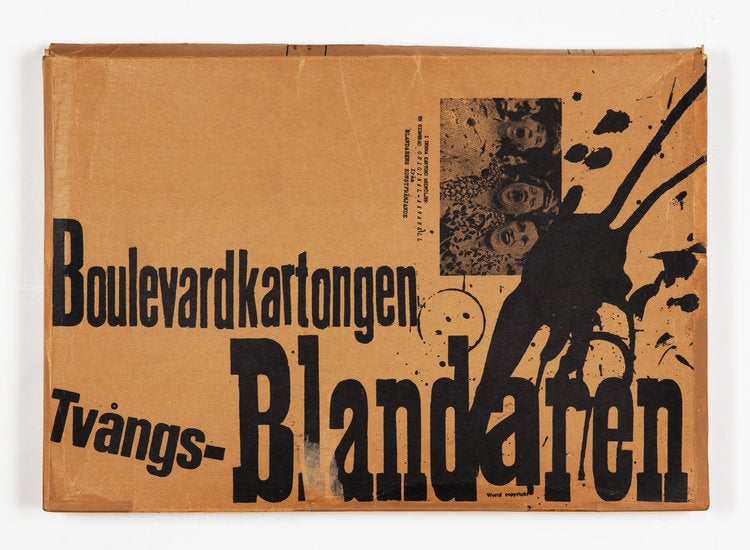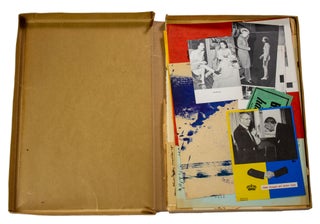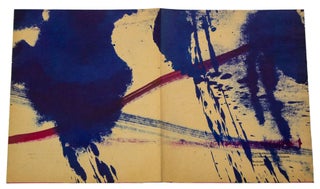Boulevardkartongen Tvångsblandaren
Stockholm: Blandaren, 1955. Original box (11 ¾ x 17 in.) containing 32 of 37 possible components, mostly illustrated prints on paper of various sizes; missing the licorice figure found in some other examples. Light tears and wear to box; interior contents are in very good condition, with mild edge wear to some items. Some light tears and wear to box; interior contents are in very good condition, with some light edge-wear to a small number of items. Item #ANT136
Rare assemblage issue of long-running Swedish art students’ magazine Blandaren, edited by Pontus Hultén and Hans Nordenström with contributions from Hultén, P.O. Ultvledt, and others. The box assemblage marks a largely hidden historical link between the pre-war European avant-garde and post-war movements like Fluxus; it was rumored to have sparked in George Maciunas the idea for his assemblage publications, the Fluxus Boxes.
Boulevardkartongen Tvångsblandaren was a collaborative project of the magazine Blandaren, spearheaded by Pontus Hultén, who in 1958 assumed the directorship of the Moderna Museet in Stockholm and in 1974 became the first director of the Centre Georges Pompidou in Paris. Hultén conceived of Boulevardkartongen after becoming acquainted with Marcel Duchamp, and was inspired by Duchamp’s Boîte-en-Valise [Box in a Valise], which gathered together sixty-nine reproductions of Duchamp’s early works.
Comprising a disparate assortment of objects such as a musical score, a fake bank note, a call from the Swedish Society For Water As A Friend, black and white and color illustrations, newspaper clippings, and a flip book, it also features a set of two “machine paintings,” which notably pre-date Giuseppe Pinot-Gallizio’s industrial paintings. Unknown until recently, they are startling and beautiful prefigurations of Situationist technique.
As a result of the work’s assembly by energetic and inebriated students, as well as the frenetic pace of production (25,000 copies were produced by six people in four hours), each box carries slightly inconsistent contents.
Sold




